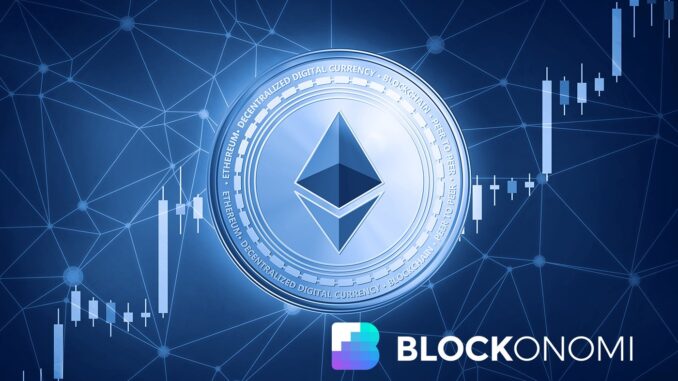
[ad_1]
TLDR
Ethereum’s price dropped 7.3% between Oct. 1-8, underperforming altcoins
Ethereum ETFs saw no net inflows on Oct. 7 and $548M in outflows since July launch
Ethereum’s DEX volume dominance fell from 64% to 22%, with Solana now leading
Layer-2 solutions like Base are gaining traction within Ethereum ecosystem
BlackRock positioned Ether as a “risk-on” asset competing with equities/venture capital
Ethereum, the second-largest cryptocurrency by market capitalization, has been facing headwinds recently as its price and network activity have stagnated.
Between October 1 and October 8, Ether’s price fell by 7.3%, erasing gains made in the previous two weeks. This decline mirrored movements in the broader altcoin market, suggesting that the downturn is not unique to Ethereum.
Investor sentiment towards Ethereum has been mixed. Since September 1, Ether has dropped 2% while the overall altcoin market cap increased by 4.5%.
This discrepancy can be partly attributed to the underwhelming performance of Ether exchange-traded funds (ETFs) in the United States.
These ETFs saw no net inflows on October 7 and have experienced a cumulative outflow of $548 million since their launch in July, according to data from Farside Investors.
Competition from other blockchains has been intensifying, putting pressure on Ethereum’s market dominance. Networks prioritizing scalability, such as Solana, BNB Chain, Tron, Avalanche, and Sui, have amassed a combined total value locked (TVL) of $19.5 billion, equivalent to 43% of Ethereum’s $45.6 billion in deposits.
More significantly, Ethereum’s share of decentralized exchange (DEX) volumes has plummeted from 64% in January 2023 to just 22% currently, with Solana now leading in this area.
However, Ethereum still maintains its leadership position when considering layer-2 scaling solutions like Base, Arbitrum, Polygon, and Optimism.
Base, in particular, has made significant strides, capturing a 14% market share in just seven months. Key projects within the Base network include Aerodrome, which facilitated $2.93 billion in trades over the past week, and Uniswap, which saw $1.36 billion in trading volume during the same period.
Despite the growth of Ethereum’s ecosystem through layer-2 solutions, the number of transactions on the base network has remained relatively stagnant.
This lack of growth in network activity has led to some undesirable consequences. When there is low competition for processing power, Ether becomes inflationary, as reduced demand for block space and lower transaction fees diminish the incentives for validators to secure the network.
In an unexpected development, BlackRock, one of the leading providers of Ether ETFs, recently emphasized that Ether’s value proposition aligns more with “risk-on” assets.
This positioning places Ethereum as a potential competitor to equities and venture capital, contrasting with Bitcoin’s core narrative as “digital gold.”
The global economic context adds another layer of complexity to Ethereum’s outlook. Daniel Yergin, vice chairman of S&P Global, reportedly told CNBC that the global economy is entering a “dangerous time” due to escalating tensions in the Middle East and reduced oil demand from China.

[ad_2]
Source link




 Bitcoin
Bitcoin  Ethereum
Ethereum  Tether
Tether  XRP
XRP  Solana
Solana  USDC
USDC  Dogecoin
Dogecoin  TRON
TRON  Cardano
Cardano
Be the first to comment